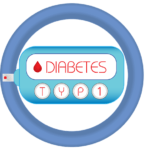Smoking and lung cancer are closely linked. Smoking, including prolonged exposure to second-hand smoke, increases the risk of lung cancer by up to 30%.
Lung cancer has not been linked to vaping and e-cigarettes. However, conditions like EVALI (e-cigarette vaping-associated lung injury) have been reported.
Introduction:
Smoking is a deadly, addictive habit that causes widespread health damage and preventable deaths globally.
Often influenced by peers, family, or misleading ads, it affects nearly every organ and can lead to severe health conditions despite clear warnings about its risks. Recognizing its dangers is essential to mitigating its impact.
How many deaths per year are attributed to smoking?
Cigarette smoking is one of the most commonly practiced habits worldwide. A total of 480,000 deaths are caused by smoking in the United States per year, and nearly 41,000 deaths are caused by passive or secondhand smoking alone. [Ref]
Smoking pollutes the environment, and many people know the possible consequences of smoking, but they still participate in the behavior actively.
Smoking’s Association with Lung Cancer
Cigarette smoking has been connected to several other disorders, but one of such conditions is lung cancer, which is repeatedly talked about and often advertised on the packaging that ‘cigarette smoking can cause cancer. There are a bunch of toxic chemicals that are inhaled in smoking.
Basic Facts Regarding Smoking and Lung Cancer
Here are some facts regarding the association between smoking and lung cancer. [Ref]
- Smokers are at an increased risk of lung cancer, 15 to 30 times more than those who do not smoke
- Smoking only a few cigarettes per day can increase the risk of lung cancer
- Other products, like cigars or tobacco, may enhance the risks for lung cancer as well
- Tobacco smoking has nearly 7,000 toxic chemicals, many of which are poisonous, and almost 70 are known to be carcinogenic
- Quitting this act decreases the risk for cancer by many folds
- Apart from lung cancer, smoking is capable of causing cancer at any other site in the body, including the mouth, larynx, pharynx, voicebox, liver, pancreas, bronchus, and renal pelvis
- In the United States alone, nearly 80% to 90% of lung cancer deaths are associated with cigarette smoking
- The number of cigarettes being smoked is directly related to the risk of lung cancer
- Second-hand smoking is also very capable of causing lung cancer as the person breathes the smoke of a smoker’s cigarette
How is Lung Cancer Caused by Smoking?
There is a whole process by which cigarette smoking causes lung cancer in your body. The basic point to know is that cigarette smoking releases over 5,000 different chemicals. Tobacco smoking is known to have almost 70 chemicals that can cause cancer. [Ref]
So when a person inhales cigarette smoke, these chemicals can then easily enter the lungs and affect the rest of the body as well. These chemicals can induce mutations in the cells, but your body is capable of healing from this situation.
However, with the passage of time, the mutations are greater in comparison to your body’s healing capacity. The chemicals can hinder the immune response as well.
On another note, such chemicals can also affect the small air sacs present in your lungs called alveoli, which are solely responsible for exchanging oxygen with carbon dioxide.
The destruction of alveoli can lead to chronic obstructive pulmonary disorder (COPD).
Can Secondhand Smoking Increase Your Risk for Cancer?
Reportedly, second-hand smoking is responsible for over 7,000 deaths from lung cancer [Ref]. Many measures have been taken to avoid smoking indoors, still long exposure to someone else’s cigarette smoke is very common.
According to research, secondhand smoke can increase a person’s risk for cancer, particularly lung and breast cancer.
For this reason, in clinical settings, there should be detailed questioning about any incidence of exposure to passive smoking. The findings suggest that passive smoking is quite detrimental to non-smokers, too. [Ref]
Can E-Cigarettes Cause Cancer, too?
E-cigarettes, like vapes, are battery-operated devices that are portable and convenient to use. These cigarettes are pretty fashionable, and they deliver a decent amount of nicotine when inhaled, and nicotine is responsible for causing brain damage.
These e-cigarettes may also deliver heavy metals and chemicals (such as diacetyl) that are used for flavoring can cause conditions like bronchiolitis obliterans. For such reasons, researchers discourage the use of e-cigarettes by teenagers.
The cancer-causing impact of e-cigarettes is still under investigation, however, scientists believe that vaping does contain cancer-causing agents, but in smaller amounts as compared to cigarette smoking. [Ref]
Formaldehyde is known to provoke cancer, and it is delivered when the liquid inside the vape heats up.
Types of Lung Cancer in Smokers
Once diagnosed with lung cancer, it is essential to know the distinct type of it as well. Doctors characterize lung cancer into two main types depending on the cellular appearance of the lung under a microscope. The treatment plan is based on which type of lung cancer present.
Small Cell Lung Cancer:
- This one is less common in comparison to the second type, and it is exclusively present in heavy smokers or chain smokers.
- Almost 13% to 15% of all lung cancers are small cell lung cancers. This type of cancer is quite aggressive compared to non-small cell lung cancer. [Ref]
Non-Small Cell Lung Cancer:
- This comprises several types of cancer, which include adenocarcinoma, squamous cell carcinoma, large cell carcinoma, etc.
- Premium Ingredients: Our tea blend features high-quality Berberine, aromatic Oolong, and refreshing Mint, all organicall…
- Mint Flavored: Enjoy the cool, crisp taste of mint that perfectly complements the robust flavors of Berberine and Oolong…
- Unsweetened with Zero Calories: Crafted for those who appreciate the natural flavors of tea, our blend is completely uns…
- ♫【NATURAL PLANT INGREDIENTS】: Quit Smoking Aid Patches are made from natural ingredients that can effectively help quit …
- ♫【STOP SMOKING ONCE & FOR ALL】: Complete Smoking Cessation Patch with Four Weeks Step 1 at 21mg, Two Weeks Step 2 at 14m…
- ♫【REDUCES CRAVINGS】: If you smoke more than 10 per day: Start with step 1; If you smoke 10 or less per day: Start with s…
- UPGRADE NICOTINE PATCHES – The upgraded version of the Stop Smoking Patch contains 42mg natural plant ingredients, cut i…
- HELP TO QUIT SMOKING – Quit Smoking Aid natural plant ingredients, Gradual reduction of nicotine dependence,Eliminate ha…
- BEST USE PROGRAM – Smoking Aid to Quit Smoking provides 3-Step method to stop smoking in 5-6 weeks. If you smoke more th…
- Herbal Sticks : Tobacco and Nicotine Free, providing a soothing and aromatic smoking experience without the harmful effe…
- 4 Packs: Each pack contains 20 individual herbal sticks, offering a long-lasting smoking experience.
- Help to Quit Smoking : Our herbal sticks can help you quit smoking by providing a similar sensation to traditional cigar…








